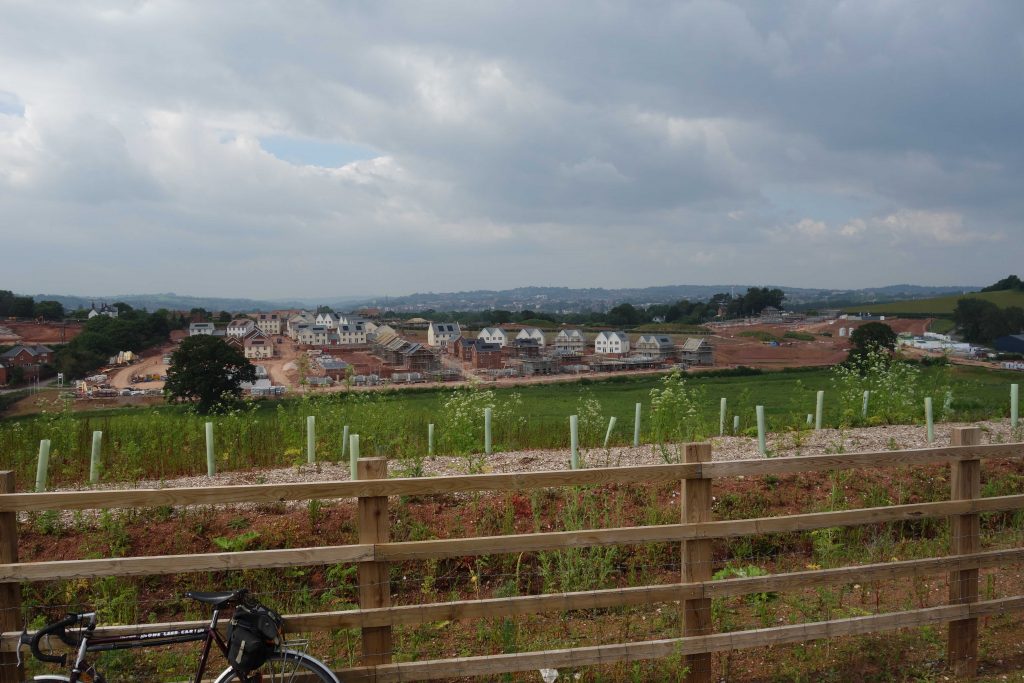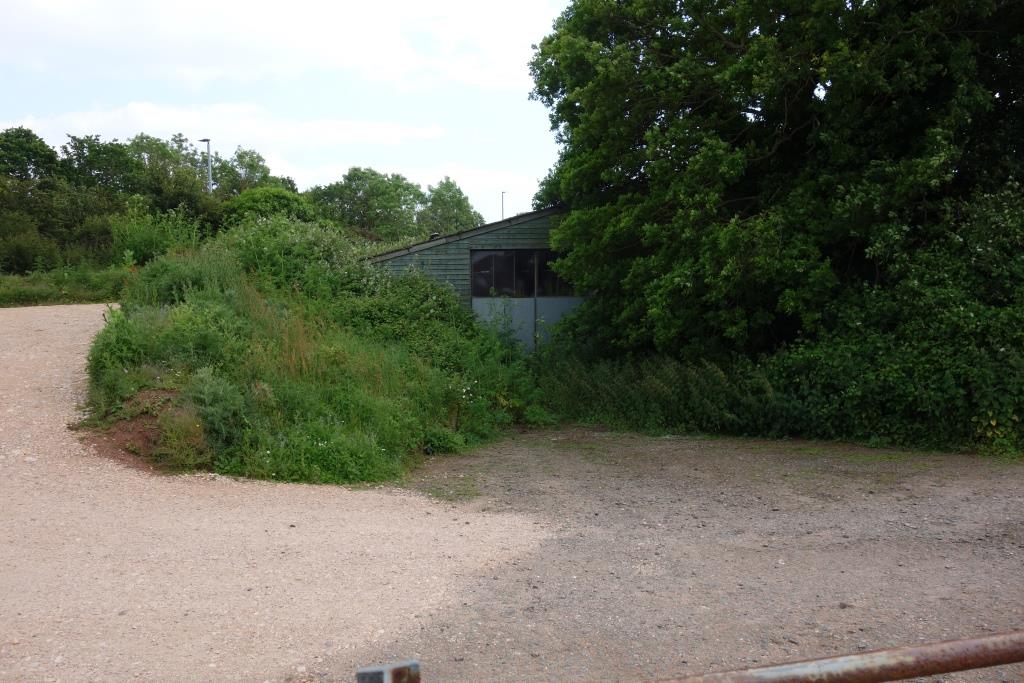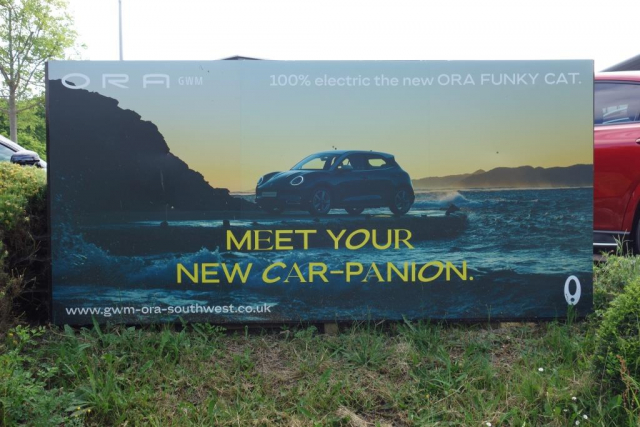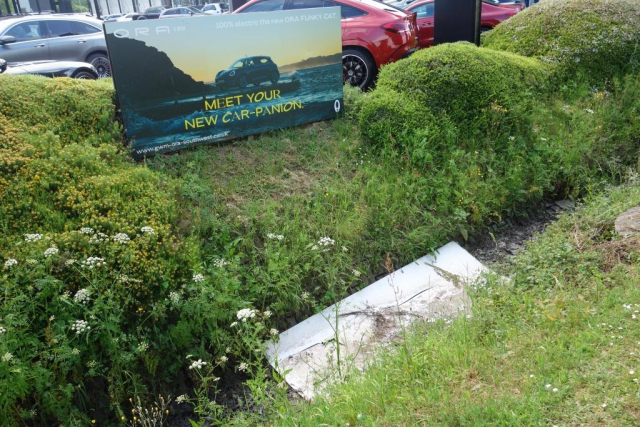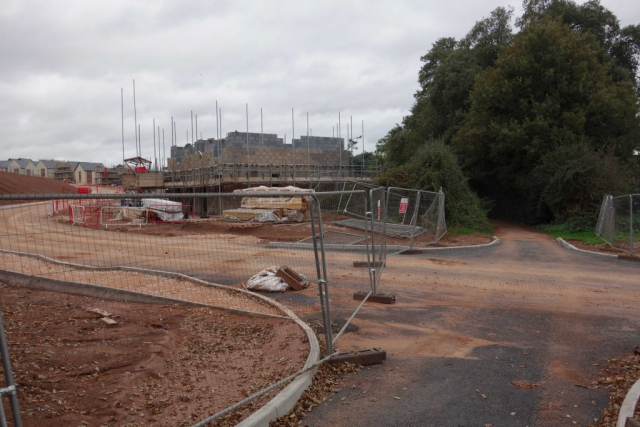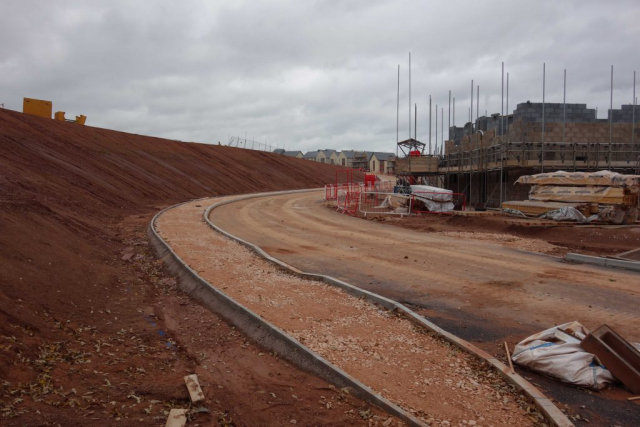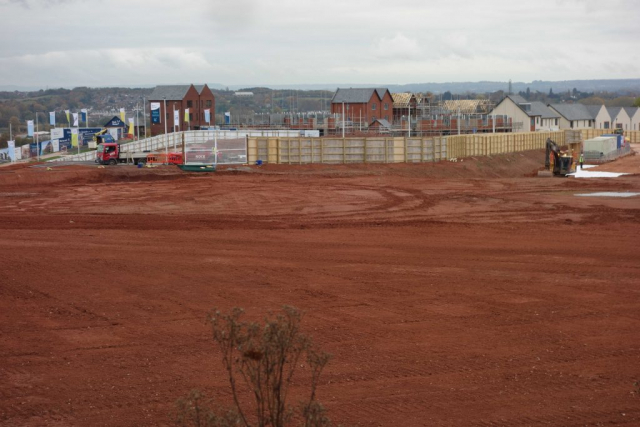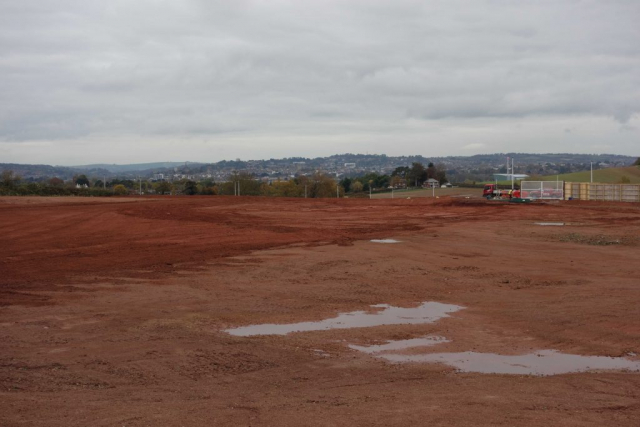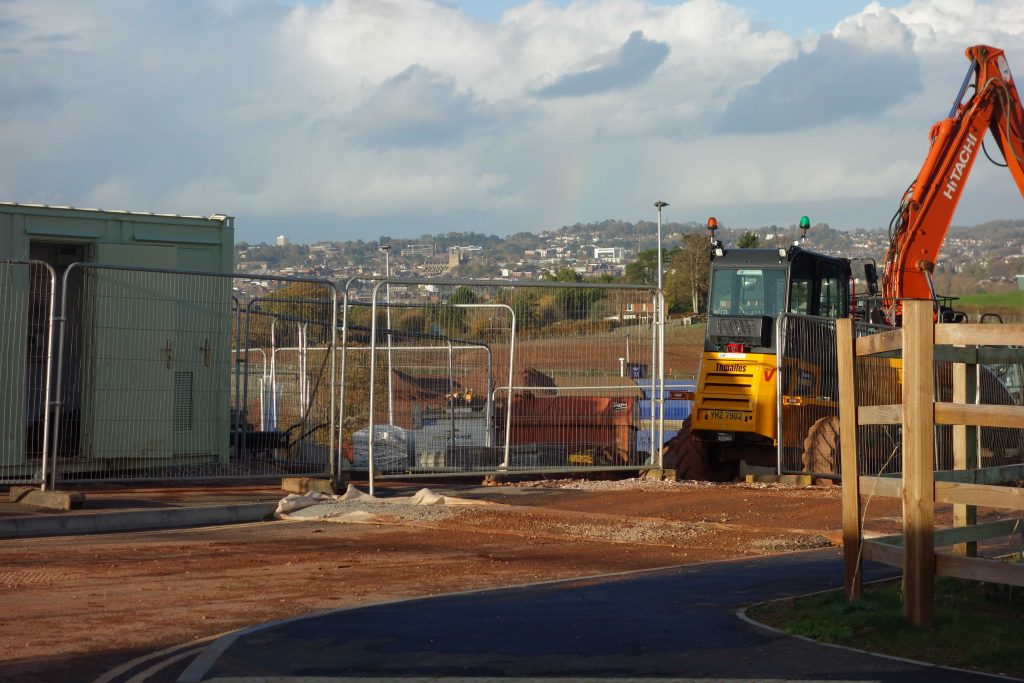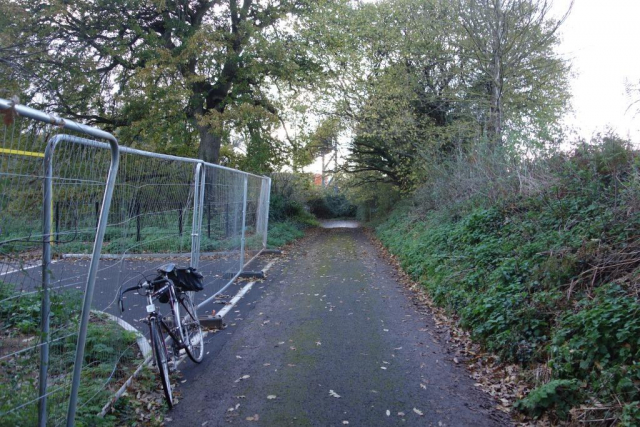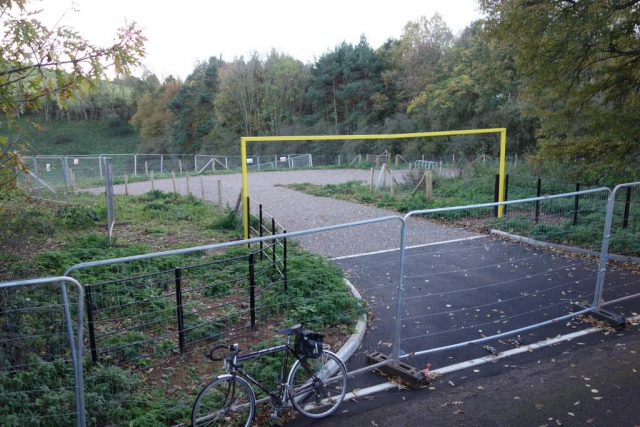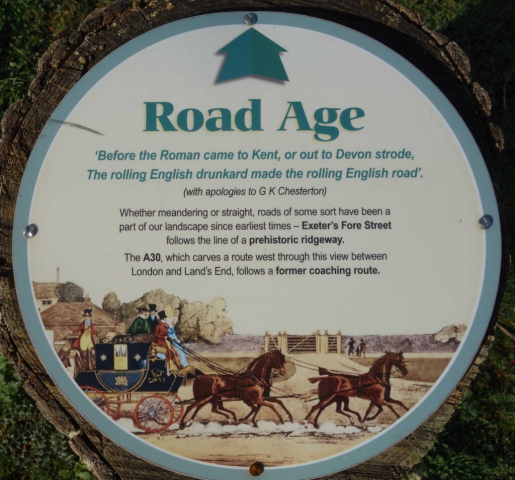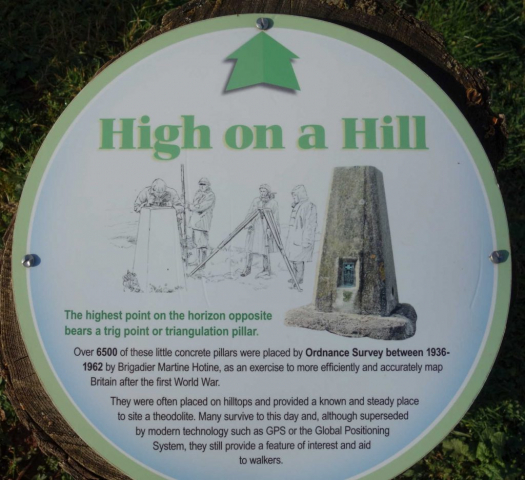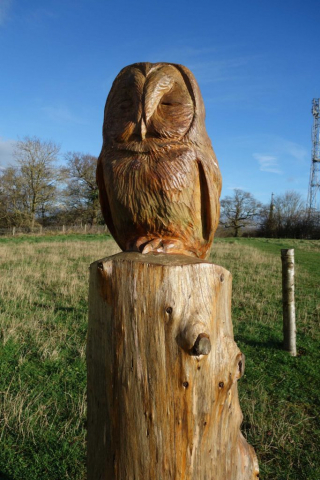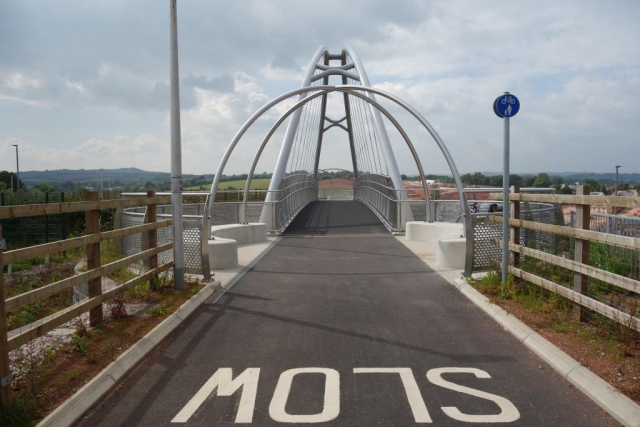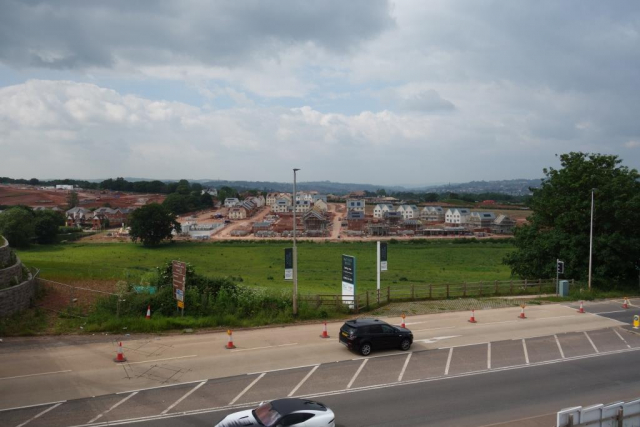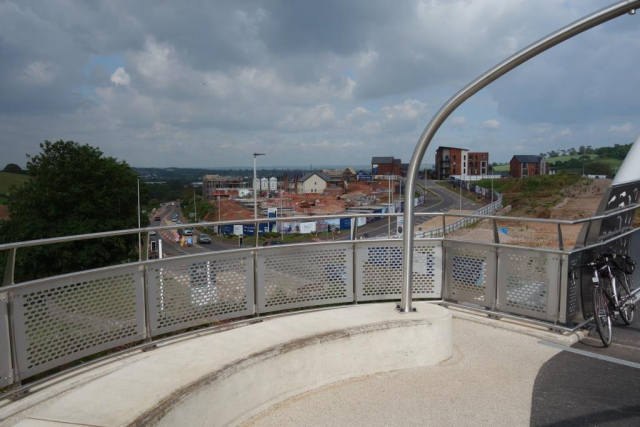The malignant cancer, Exeter, is starting to spread south west from Alphington and the scout went to take a last look at the country soon to be infected.
The city has in recent years expanded massively east, as far as it can west, but not so much to the north; it has grown south to swallow lovely Topsham and, west of the river, it is about to gobble up more of Alphington, spill over the boundary of the city into Teignbridge and start eating into Exminster.
The growth in this direction continues the expansion of Marsh Barton Trading Estate. From its origin on what was Marsh Barton Lane after the war, it eventually spilled over the Alphin Brook and, as Matford Business Park, developed on either side of Bad Homburg Way, a link to the old A38, completed in the 1980s.
The scout watched its last push to the city boundary as the land is bordered by a path which he rides regularly. He saw the bridge being made across a drainage ditch and material being tipped to raise the level above the flood plain, with hillocks of earth being moved around to “surcharge” the ground beneath. Matford Way followed and finally in 2015 the first of what was to be a dismal concentration of car dealerships opened.
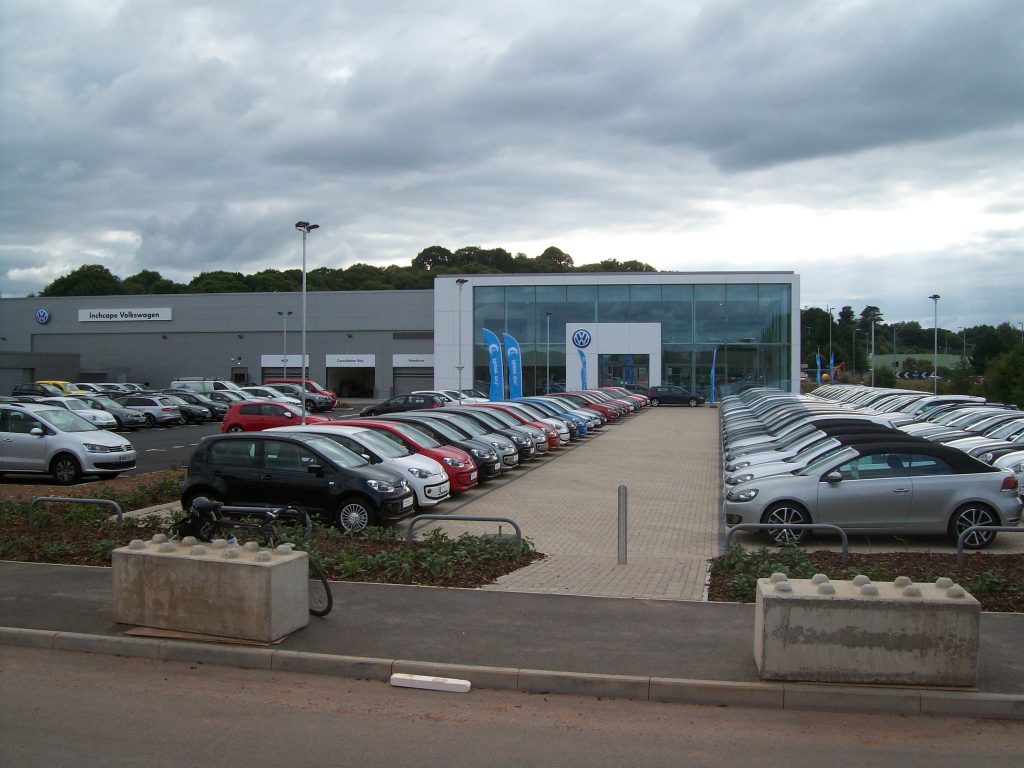
The scout is always struck by how the order and cleanliness of these self-centred transport shop windows contrasts with the chaos and filth that is caused by vast numbers of the wheeled cages being let loose on the roads.
In best Germanic tradition, the cars have been “paraded” using an infrared beam.
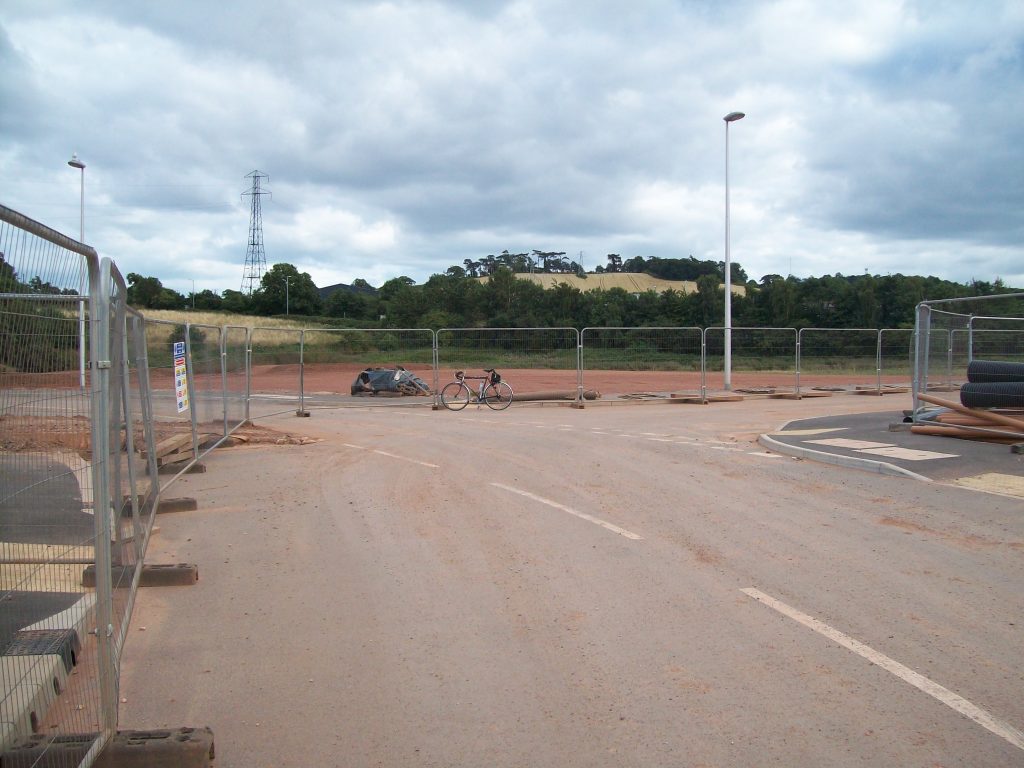
The old Dawlish road, the Exminster Parish boundary, lies just beyond the trees ahead.
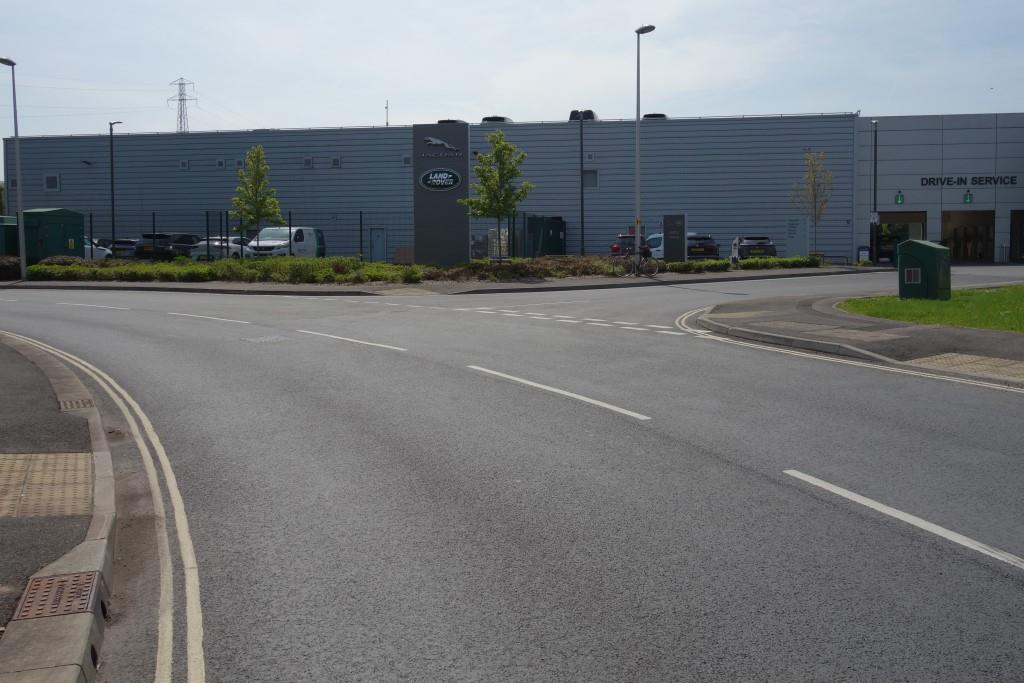
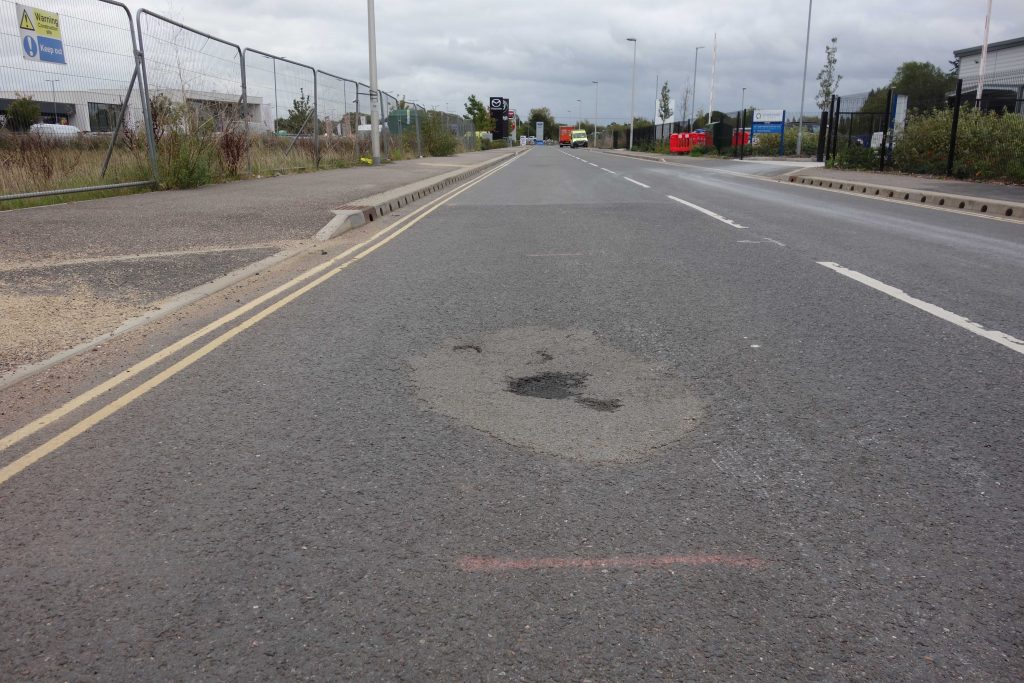
It is often said about Britain’s elderly railway infrastructure that it suffers from the early engineers not understanding soil mechanics. It is possible, however, that they understood more than their work reveals and that decisions about cutting and embankment slopes, and earth compaction, were dictated by the need to get lines finished so that they could repay investors.
Despite the science employed at Marsh Green, at least one building suffered severe subsidence and several deep depressions have developed in Matford Way. The patch here is only the worst of this one.
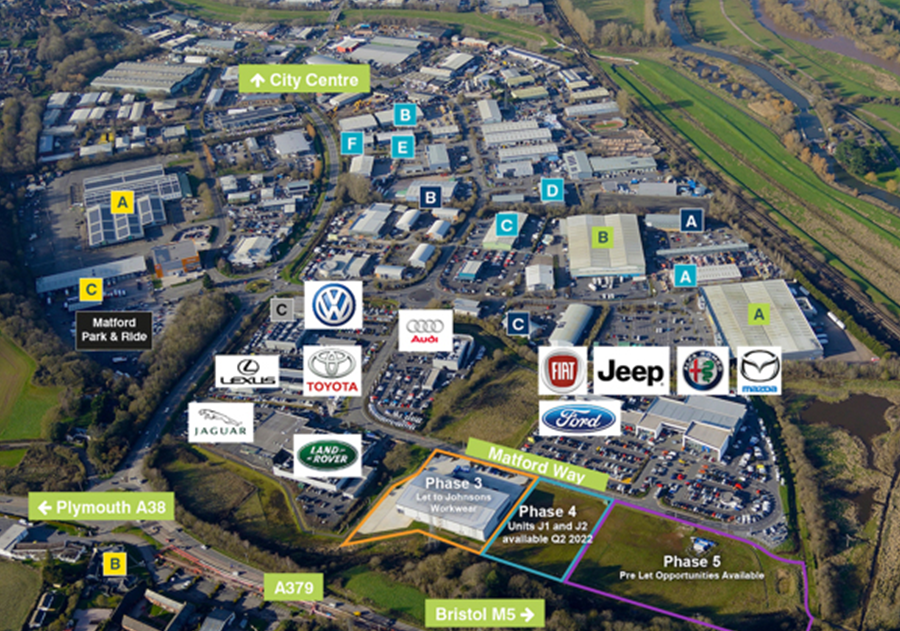
The Alphin Brook lies in the strip at the top. The South Devon main line borders the estate to the east. The Exeter Ship Canal and River Exe are at top right.
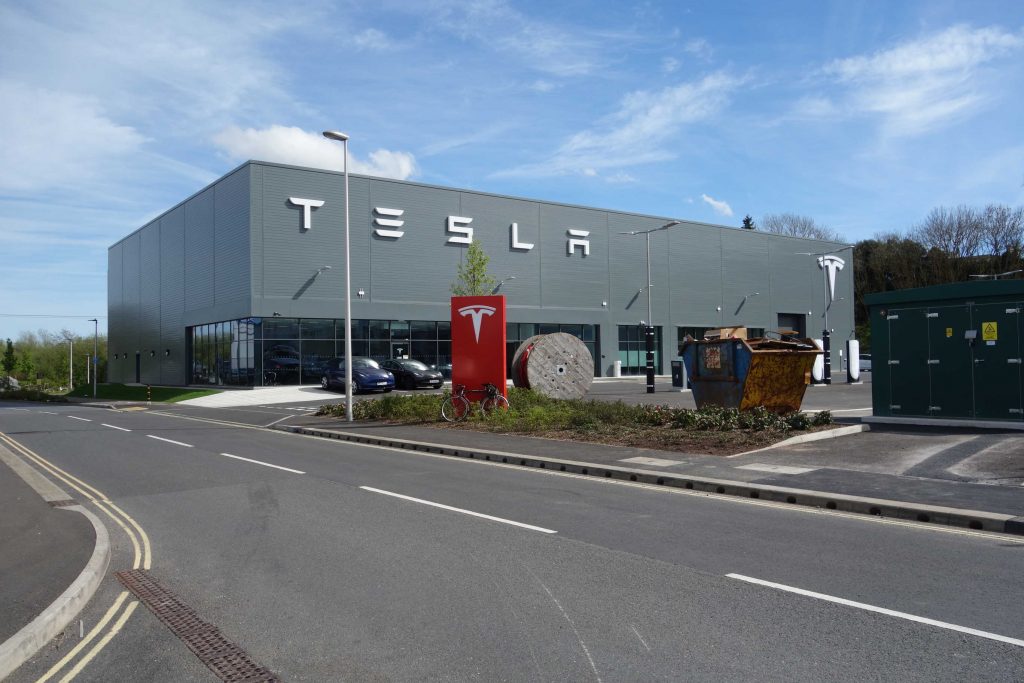
Pitiful personification: “Meet your New Car-Panion”
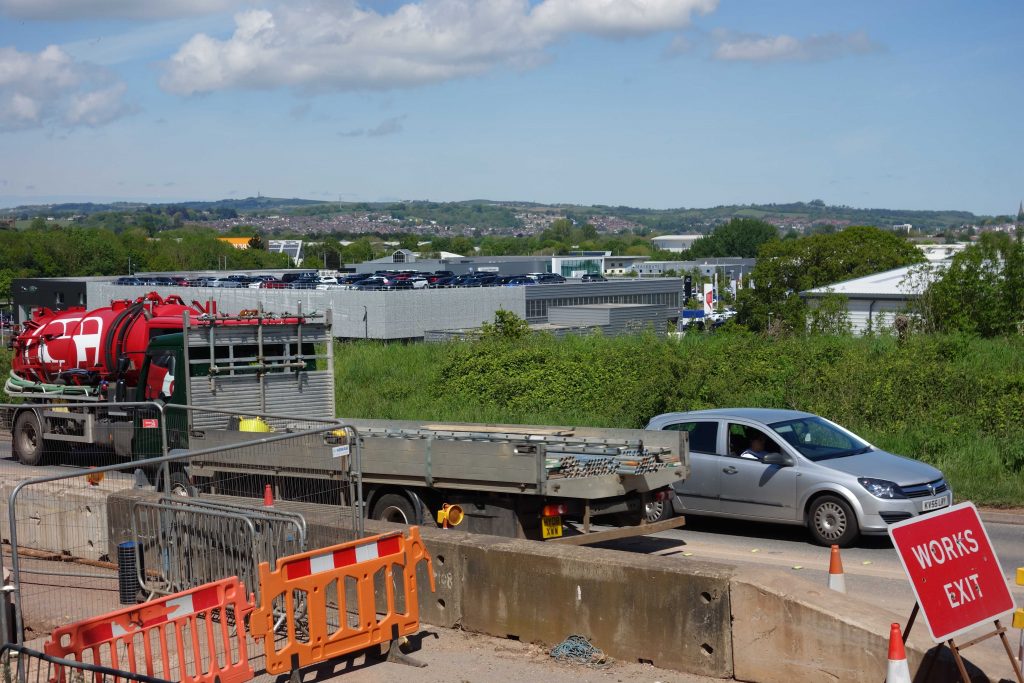
Beyond is one of the temples of the car cult, with vehicles left on the roof possibly as offerings to the gods. +
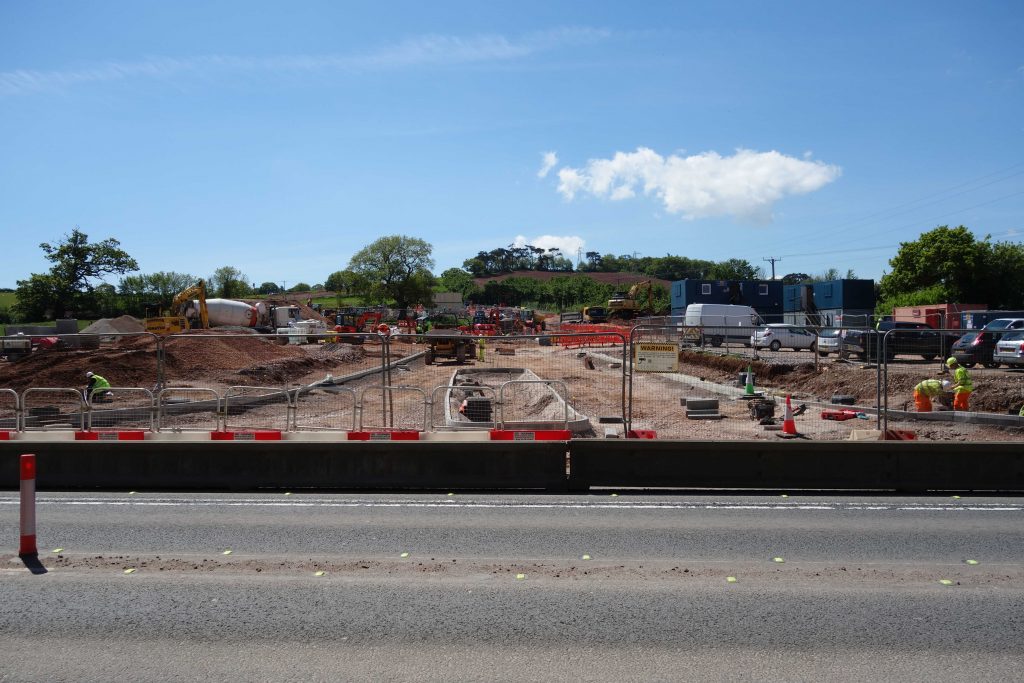
Someone was watching the scout as he crossed the two lanes in use with what he thought was relative ease.
The scout is of a generation that was used to crossing busy roads, when people let cars sweep past them as a bullfighter dodges poor beasts in the ring. So he was surprised when he saw a thickset, ruddy-faced fellow in full construction uniform come towards him as if to deliver a rebuke. As it turned out, his tone was not in the least officious and he showed only concern.
“It isn’t wise crossing this road, the way they drive along here,” he said. Puzzled, the scout replied: “Would you have felt bad if I’d been run over?” “Yes, I would,” he continued, with great feeling.
After a pause, the scout sought to allay his concern: “You know, I’ve lived a very long time.” “And I want you to live a lot longer,” he fired back. “I don’t much want to, the way the world is,” added the scout.
His manner suddenly changed. “I know, I know! I wish I hadn’t brought children into the world, the way things are.” They continued in this vein and he parted with: “Now, you take care.” The scout fibbed that for him he would.
It may be that he was being chased for child support payments and that this had soured his world view, but the scout sensed that behind the rugged exterior lay a warm, sensitive man.
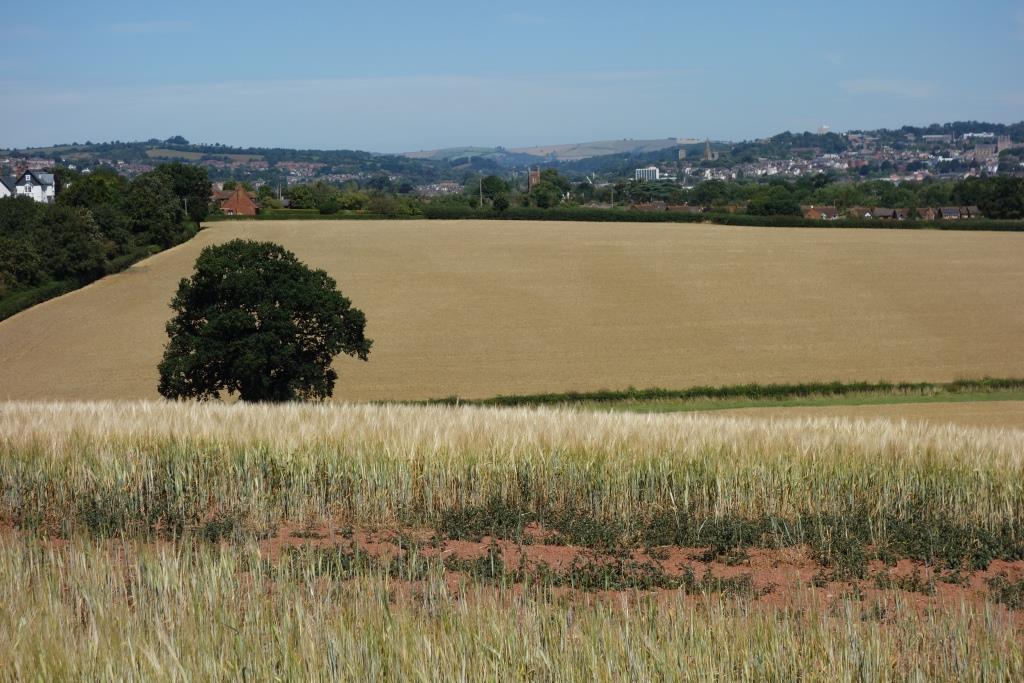
St. Michael and All Angels, Alphington, whose tower can be seen at centre, is three-quarters of a mile away. From there, it is the same distance to Marsh Barton Station. In the distance are the Raddon Hills.
Behind the camera is the old Plymouth road’s junction with the later bypass and the A30 dual carriageway. Housing estates are springing up on land to the left, on the edge of Alphington. In time, if current policy prevails, all the farmland in the foreground will be obliterated. +
Around the same time as the housebuilders began stripping the fields, construction commenced on the long-delayed Marsh Barton Station. According to Devon County Council, “it is central to the growth plans for the South West Exeter urban extension.” And the Heart of South West Local Transport Board 2014 business case stated: “The station will support the delivery of 2,500 homes at South West Exeter and an additional 2,000 jobs at Marsh Barton.” Its estimated cost has risen from an original four million to £16-million, a staggering sum for a station which will have no car park and only minimal facilities.
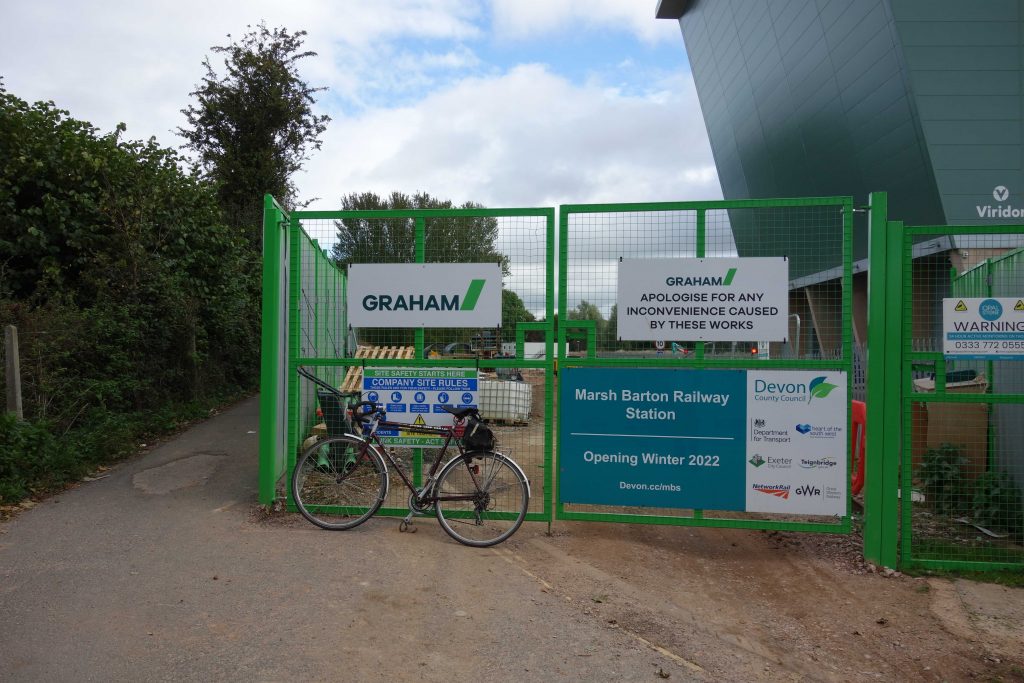
Viridor’s Exeter Energy Recovery Facility, on the site of the earlier incinerator, turns 60,000 tonnes a year of waste into electricity, enough to power the process and export a substantial amount to the grid.
A site like this would once have been valuable to firms wishing to use rail transport. In this case, the waste comes from the city and surrounding area, but the bottom ash and residue may go further.
Like the other new stations around Exeter, there have been no direct contributions from the rail industry towards the cost of Marsh Barton.
Little Silver Lane, off the Dawlish road, was crossed by the 1930s extension of the Exeter bypass which linked the Dawlish and Plymouth roads between Matford and Peamore. The lane was severed by the A30 dual carriageway in 1975 and it was subsequently called Trood Lane, after Trood House, formerly Matford. A public right of way was preserved by the construction of a footbridge spanning a cutting. The lane on the other side is still Little Silver, after the cottages there.
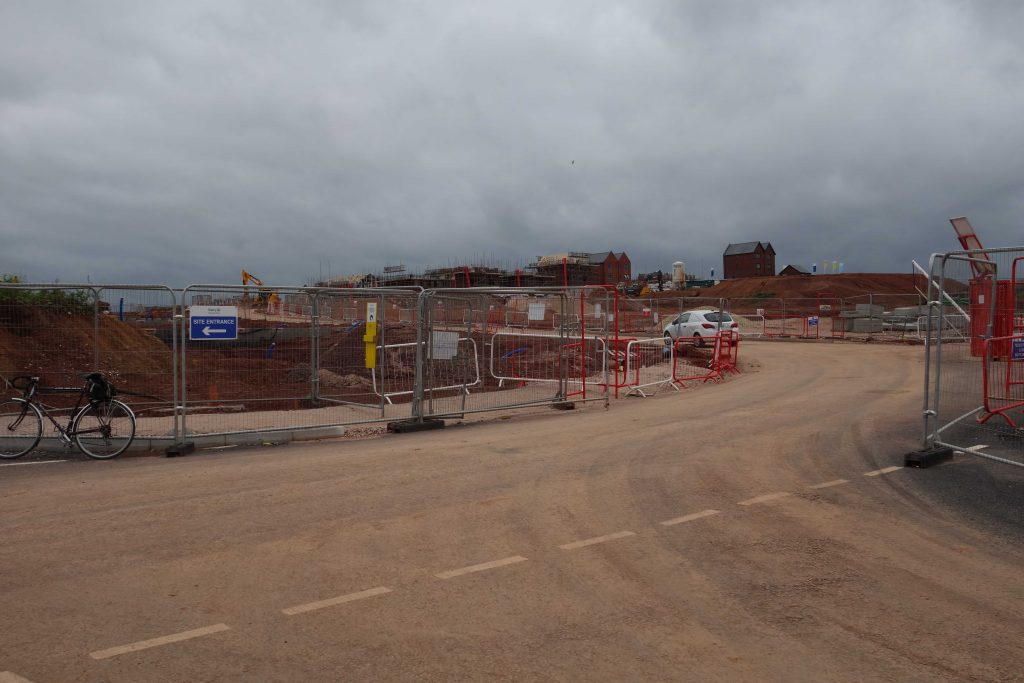
What look like the usual flags seen outside the sales office can be seen beside the gaunt house on the hill.
How likely is it that the future occupants of these houses will ever think of using Marsh Barton Station?
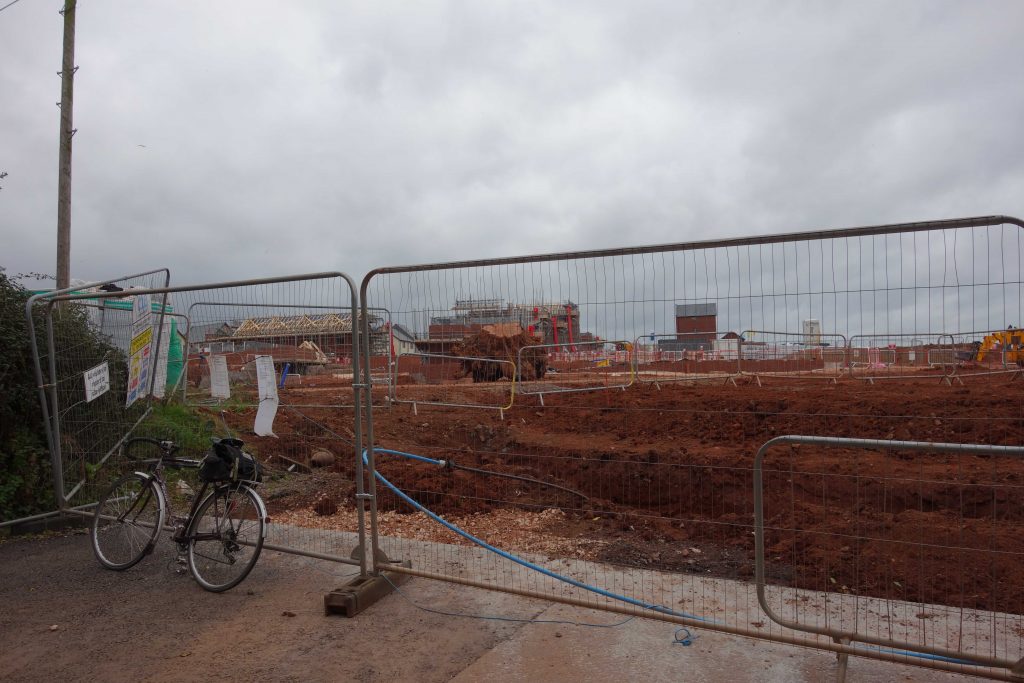
A huge stump, shorn even of its roots, sits at centre, perhaps reserved as an object for a bit of public open space.
Below: Two weeks later, when the scout passed the same spot, all the builds in the foreground were complete up to damp course and the trenches had been backfilled.
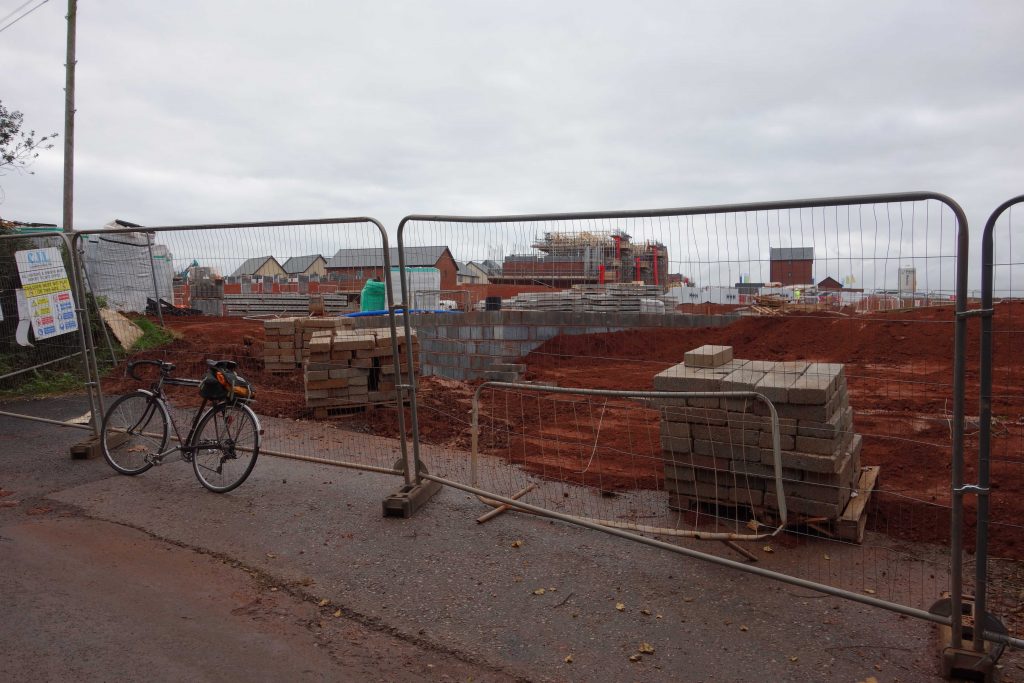
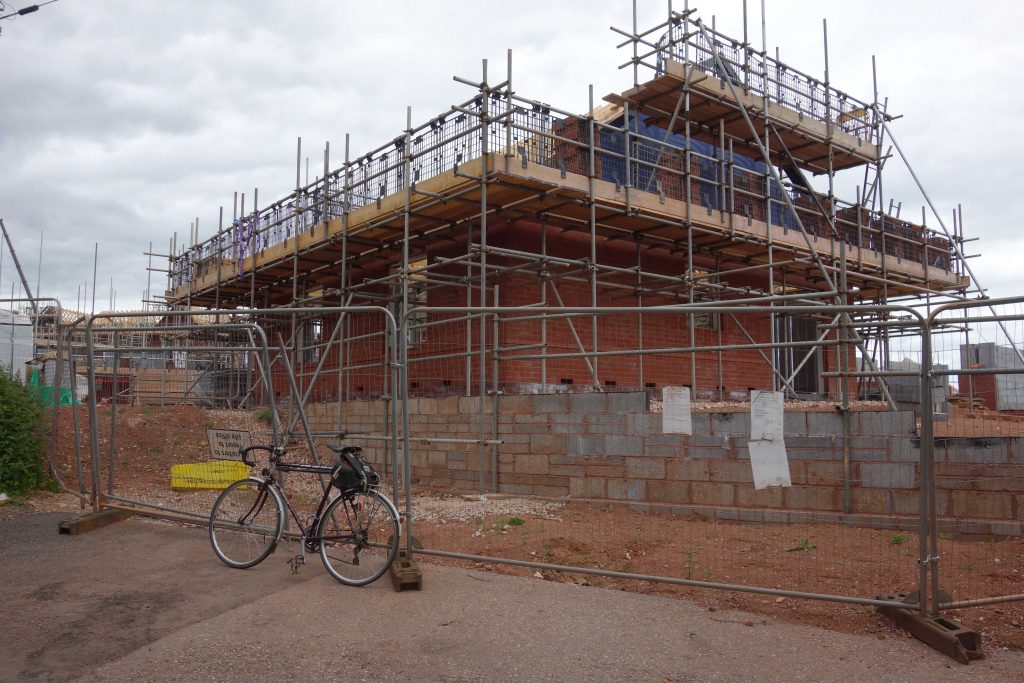
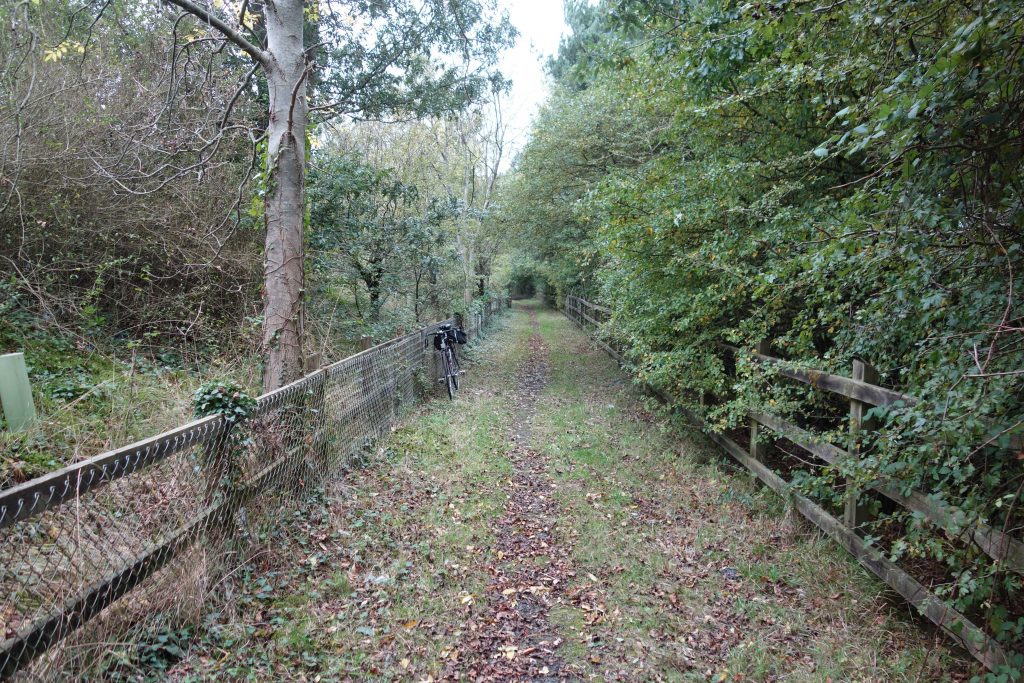
It would be a pleasant walk were it not for the din of the dual carriageway, immediately at left. With so many houses being built nearby, it will soon be unlikely that anyone has the path to himself, as the scout did on this occasion.
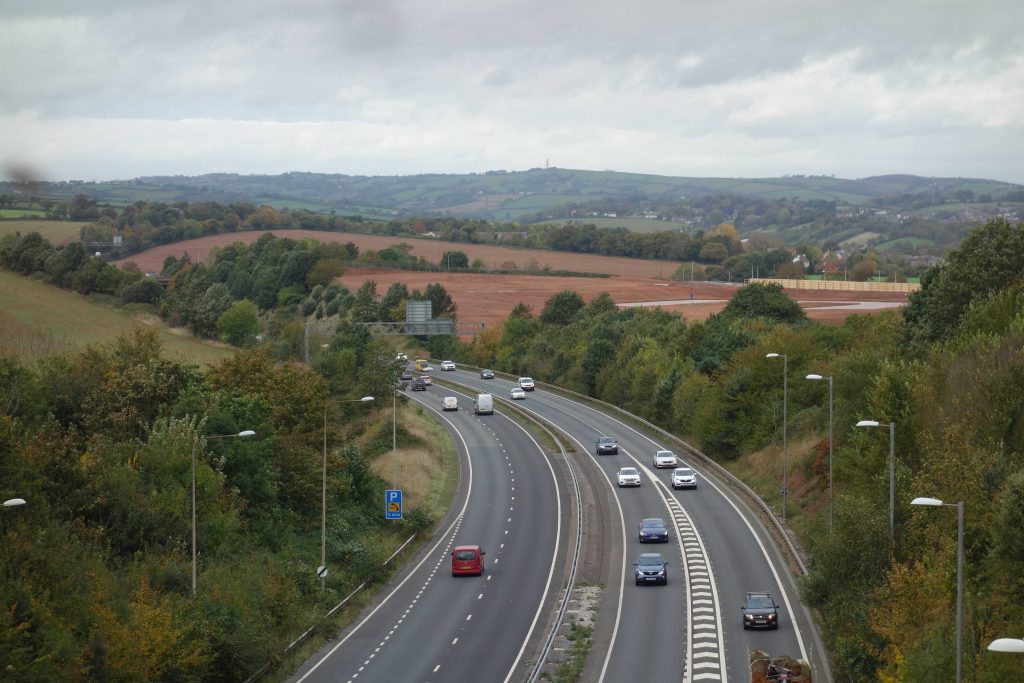
At far centre can be seen the transmitter on Waddles Down, above Whitestone. +
The scout circled around the huge Junction 31, where the A30, A38 and M5 meet, and dropped down Matford Lane.
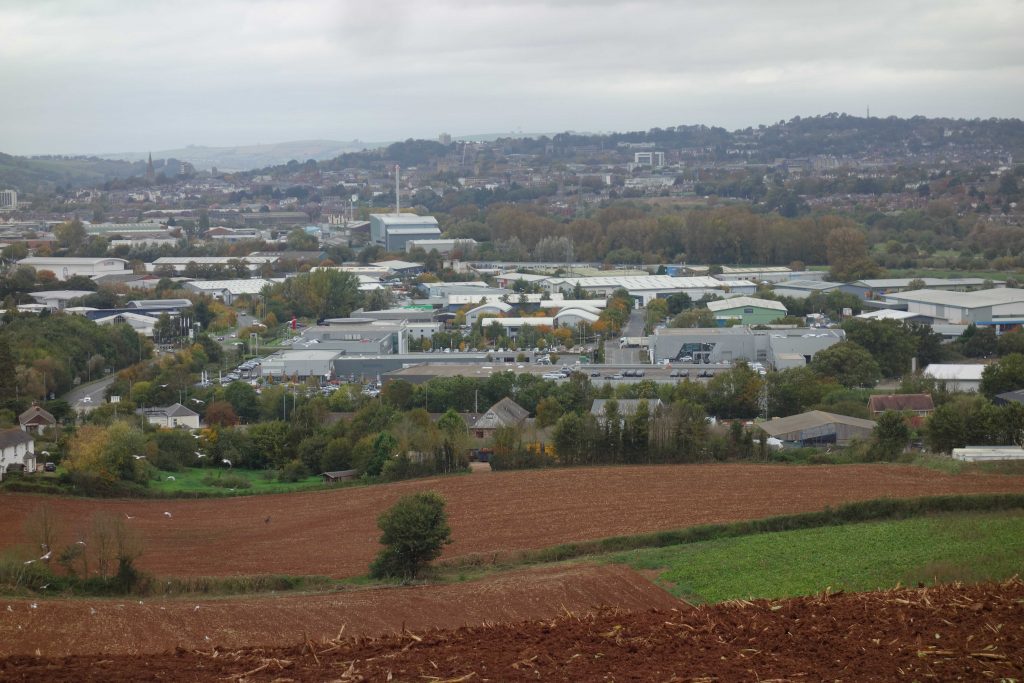
What the scout remembers as Bobby’s – now John Lewis – can be seen in the city just to the right of centre. Marsh Barton Station is being built just to the right of the Energy Recovery Facility, marked by its tall chimney. +
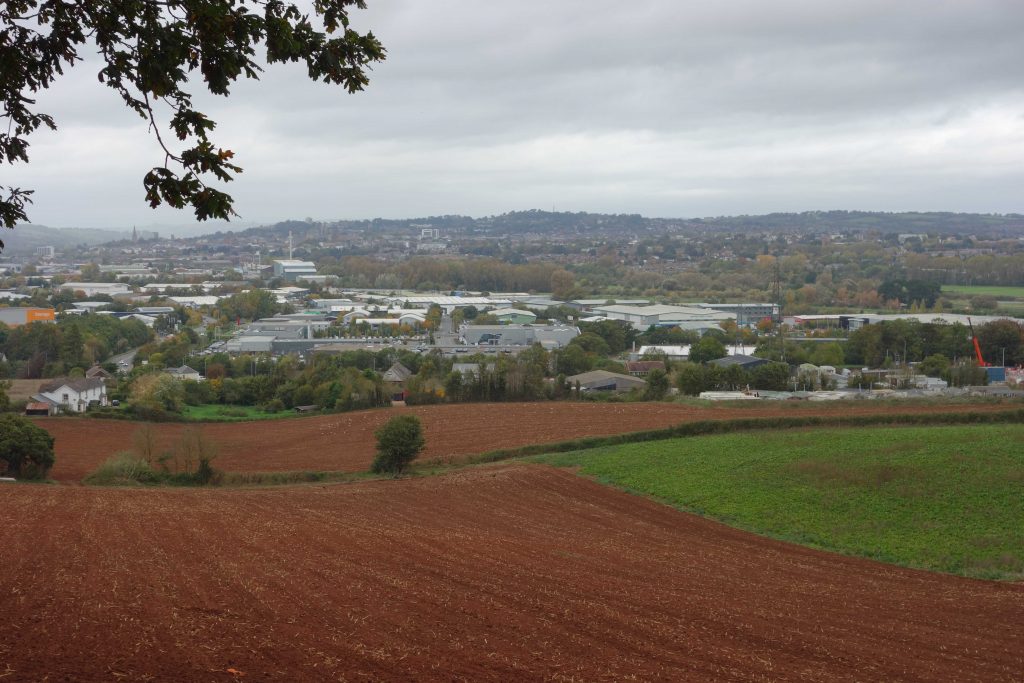
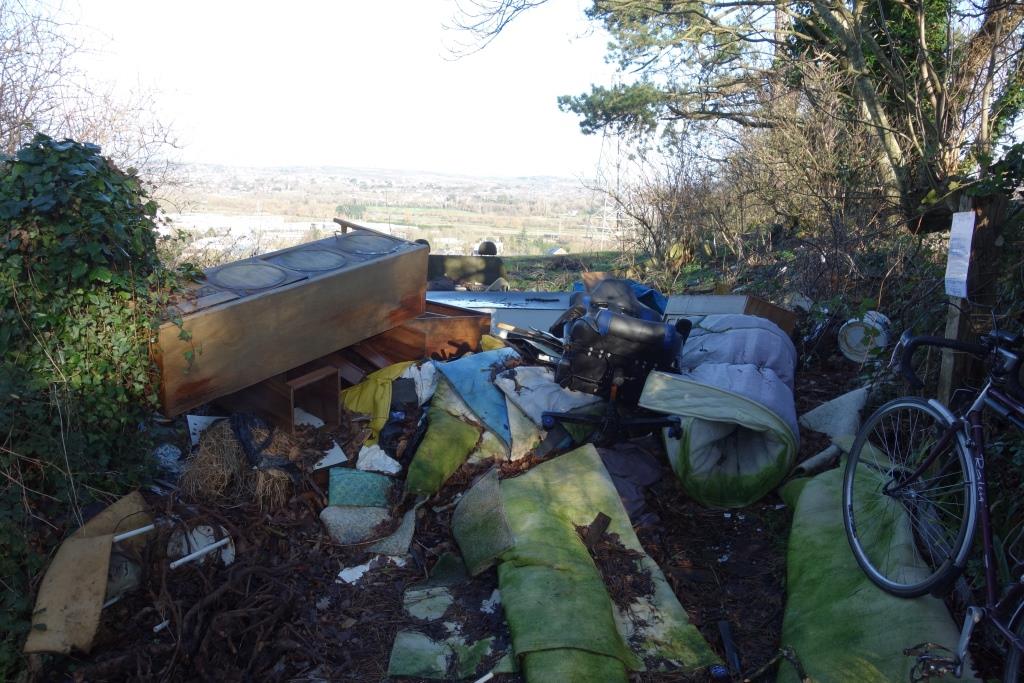
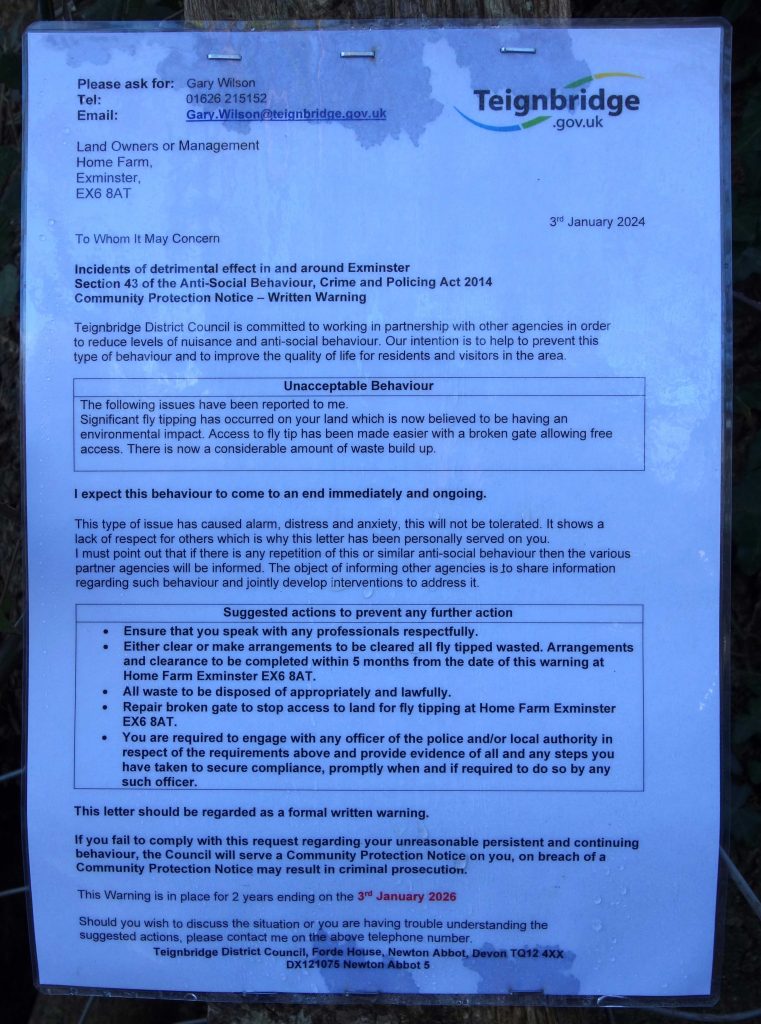

Will “more” ever be enough?
Two weeks later, the scout returned for a closer look at the other new junction with the old bypass. On this occasion, the watchful eye belonged to a roughneck who was not concerned about the scout’s safety. He had dared to step beyond the tape onto a closed-off lane of the busy road where nothing was going on and this earned him a polite rebuke: “You shouldn’t be here. This is a construction site.”
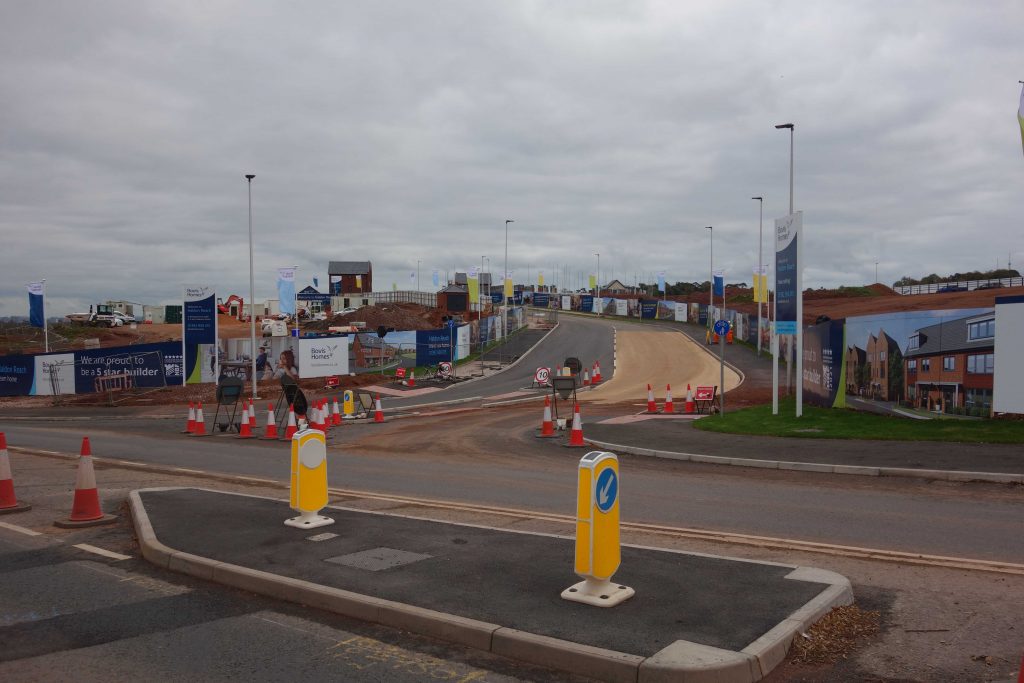
A footpath which crossed this land has been diverted to follow the boundary of the A30 to Trood Lane.
November, 2022: Sunny intervals were forecast and so the scout went for a quick ride around the area.
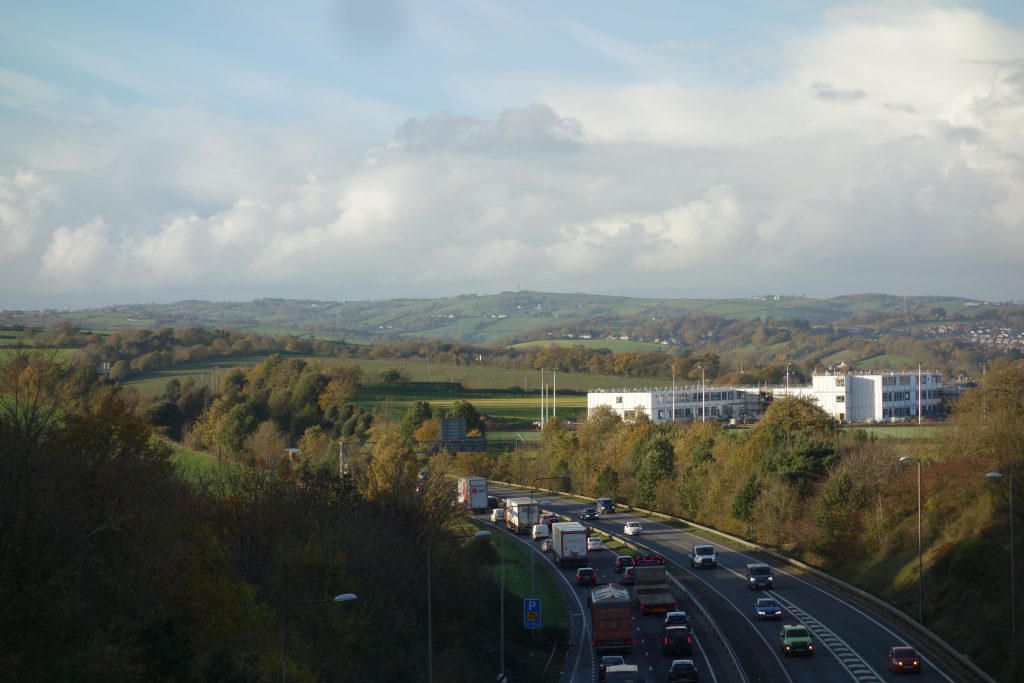
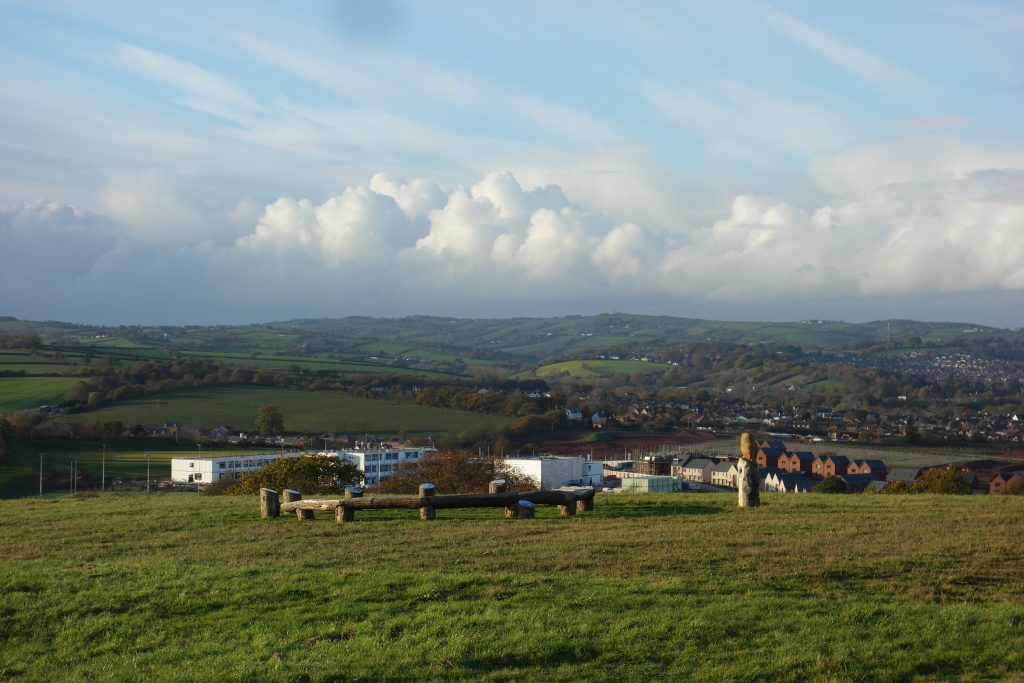
The seating circle includes these informative plaques written by a wise owl.
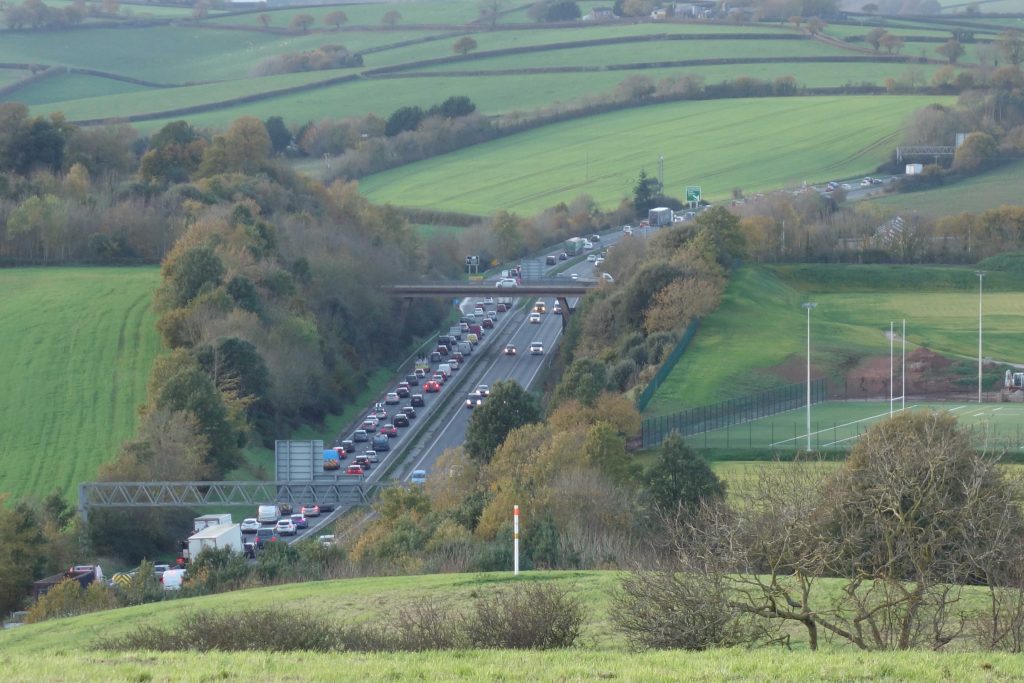
This was part of the four-mile Pearce’s Hill to Pocombe Link section of the A30 dual carriageway, with its thirteen major structures, opened in 1977. Before then, much of the traffic of the A30 passed through the centre of Exeter.
May, 2024: On his way back from Exminster, the scout went to look at the new Matford Brook Academy, whose opening was being delayed by construction problems, and then tested the new footbridge over the Chudleigh road.
He stopped by the old blacksmith’s shop where he had taken the view four years before.
